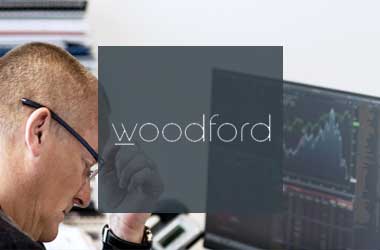 While officials in China try to claim on a zero-covid strategy, Chinese share prices have fallen and the Australian dollar has fallen as a result of this uncertainty. An additional 5.68 percent plunge in the Chinese A50 and a fresh six-year low in the Hong Kong HS50 on Tuesday signaled a severe decline in market morale. As a viral epidemic spread swiftly, the number of fresh Covid cases in China rose by over 400% in a span of 24 hours to a two-year peak of 3,507. Lockdowns have been enacted in Jilin province in the northeast and Shenzhen, a technological center nearer to Hong Kong.
While officials in China try to claim on a zero-covid strategy, Chinese share prices have fallen and the Australian dollar has fallen as a result of this uncertainty. An additional 5.68 percent plunge in the Chinese A50 and a fresh six-year low in the Hong Kong HS50 on Tuesday signaled a severe decline in market morale. As a viral epidemic spread swiftly, the number of fresh Covid cases in China rose by over 400% in a span of 24 hours to a two-year peak of 3,507. Lockdowns have been enacted in Jilin province in the northeast and Shenzhen, a technological center nearer to Hong Kong.
Hong Kong, on the other hand, has the highest Covid morbidity rates of any country that has been hit by the pandemic for two years. A slowdown in China’s economy might have a significant impact on commodity exports from Australia and New Zealand, based on the latest trends in China’s economy. JP Morgan’s spot trading division in London writes, “Chinese authorities have announced different lockdown and isolation steps in response to a surge in COVID cases, which is putting the antipodeans under some strain this week.”
Officials in Hong Kong are concerned that the Covid epidemic potentially serves as a model for the rest of China in the upcoming months. Large freezer cases have been supplied to public hospitals in Hong Kong to keep corpses, according to media reports. In past days, Hong Kong has established a world record for the largest single day Covid pandemic fatality rate, according to data that shows the city’s Covid-19 morbidity rate has skyrocketed over Asia-Pacific counterparts and is already exceeding European nations.
Hong Kong’s skyrocketing mortality rates may be attributed to a lack of vaccination and past illness immunity among its elderly population, according to an analysis by the FT’s John Burn-Murdoch.
Patient records in mainland China is far more tightly controlled, and there are worries that Hong Kong’s comparable demographic and public health characteristics might provide a glimpse into the development of the highly infectious Omicron family of variations.
In the meantime, Chinese officials show minimal willingness to change their rigorous zero-covid strategy, implying considerable economic damage should the epidemic spread widely in China’s population. “Since the onset of the epidemic in 2020, China’s famed “zero tolerance” approach for COVID cases has faced its greatest challenge. Many of China’s large cities (and supply chain centres) are under lockdown as the nation works to contain the virus’s transmission” Matt Weller, FOREX.com and City Index’s Global Head of Research, claims this.
Inflationary pressures in the world economy continue to increase due to supply chain concerns. An economic downturn in China might have an impact on the Australian dollar, which is generally seen as a bellwether for Chinese vulnerability. Annabel Bishop, Chief Economist at Investec, said “There is a good chance that China’s zero-tolerance approach will continue for the rest of March, deepening worldwide growth worries and depressing oil prices due to the quick propagation of Omicron.”
For much of March, the Australian and New Zealand dollars had been the top – performing main G10 currencies. This was despite widespread market concern about developments in Ukraine. As the emphasis of the market participants shifts from one topic to another, the Aussie may start losing some of its latest gains if the Ukraine issue starts to fade in view of events in China.
Last week, the GBP/AUD exchange rate hit a low of 1.7734 before rebounding to 1.8109, while the AUD/USD exchange rate peaked at 0.7441 before retracing to 0.72066. In order to stabilize the economy, China is said to be preparing to lower benchmark interest rates, as per a former central bank advisor.
Bank lending in China declined more than anticipated in February, putting stress on the central bank to take action, according to data released last week. As compared to January’s historical 3.98 trillion yuan fresh yuan loan volume and experts’ forecasts, Chinese banks offered 1.23 trillion yuan in fresh yuan lines of credit in February.
The Chinese economy and its related financial assets, including the antipodean currencies, might benefit from a considerable loosening of policies. However, if there is any relief from concerns over the conflict in Ukraine, it’s possible that the AUD and NZD may give up some of their gains.
As a significant exporter of commodities, Australia’s balance of trade benefited from rising war-related commodity prices. According to Crédit Agricole’s Valentin Marinov, Head of FX Research, “More than 6% of Australia’s GDP is based on exports of oil, gas, wheat, and basic metals, which have been driven up in value by the Russian trade sanctions.”
Even as we near the midpoint of March, commodities prices are falling from latest highs due to market expectations of a truce in Ukraine as the two countries strive to reach a resolution.
If geopolitical concerns continue high, the AUD’s rise will be maintained because of a mix of increasing balance of trade and substantially lower rates with the US. When commodity prices fall and US interest rates go up in anticipation of the FOMC announcement this week, a de-escalation is likely to cause short-term headwinds” according to a Barclays weekly foreign currency strategy paper. Recent events suggest that “peak Aussie” may have already gone.




